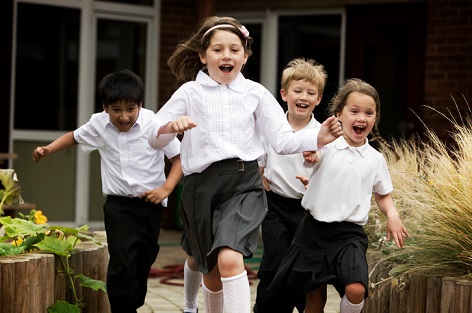
Contrary to the belief that Australians are a nature-loving outdoor nation, research suggests we’re spending less and less time outdoors. This worrying trend is also becoming increasingly apparent in our educational settings.
This research was recently highlighted by Tonia Gray, an associate professor at the Western Sydney University’s centre for educational research. Associate professor Gray has devoted the majority of her teaching and academic career to examining the relationship of people and nature.
In an article published in The Conversation, associate professor Gray said that in the last few decades, society has become estranged from the natural world, primarily due to urban densification and people’s fixation with technological devices – usually located in indoor built environments.
“Contact with nature can enhance creativity, bolster mood, lower stress, improve mental acuity, well-being and productivity, cultivate social connectedness, and promote physical activity,” Associate professor Gray wrote.
“It also has a myriad of educational benefits for teaching and learning.”
Associate professor Gray pointed out that outdoor play is not only central to children’s enjoyment of childhood but teaches critical life skills and enhances growth and development.
“Contemporary research shows outdoor play-based learning can also help improve educational outcomes. A recent study found being outside stimulated learning and improved concentration and test scores,” she wrote.
“Nature contact also plays a crucial role in brain development with one recent study finding cognitive development was promoted in association with outdoor green space, particularly with greenness at schools.”
Less time on screens
Associate professor Gray said conversations with parents and teachers show school communities are increasingly concerned about technology’s broader impact on their children, “in both dramatic and subtle ways”.
“In many ways our hunger for technology has overridden our desire for direct human interaction,” Associate professor Gray wrote.
“Screens compete directly with authentic channels of communication such as face-to-face interaction. To combat this, parents can assign one hour on and one hour off screens.”
Associate professor Gray said parents and teachers can encourage children to engage in simple, unstructured play experiences, including creating an outdoor scavenger hunt, climbing trees or laying on the grass and watching the cloud formations.
Other methods include making mud pies or sandcastles at the beach or in a sandbox; encouraging the collection of feathers, petals, leaves, stones, driftwood, twigs or sticks to make creative artworks on large sheets of paper; planting a garden with vegetable seedlings or flowers with your child (let them decide what will be planted); putting on a jacket and gumboots when it rains and jump in puddles together; or making an outdoor swing or billycart.
“Nature offers a never-ending playground of possibilities with all the resources and facilities needed. If stuck, search on the web for wild play or nature play groups nearby as they are growing in popularity and number,” Associate professor Gray wrote.
“But most importantly, reinforce the message that getting wet, having dirt stains on their clothes and getting their hair messy is good and adds to the fun.”


